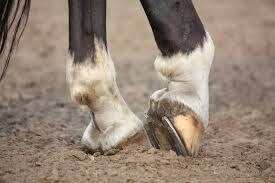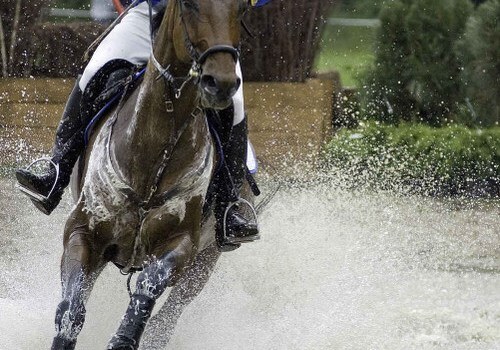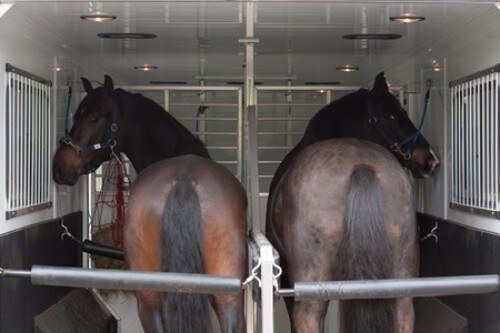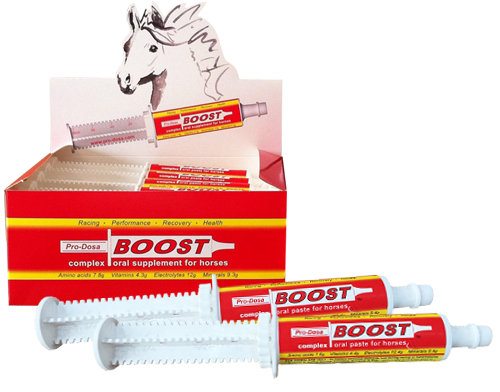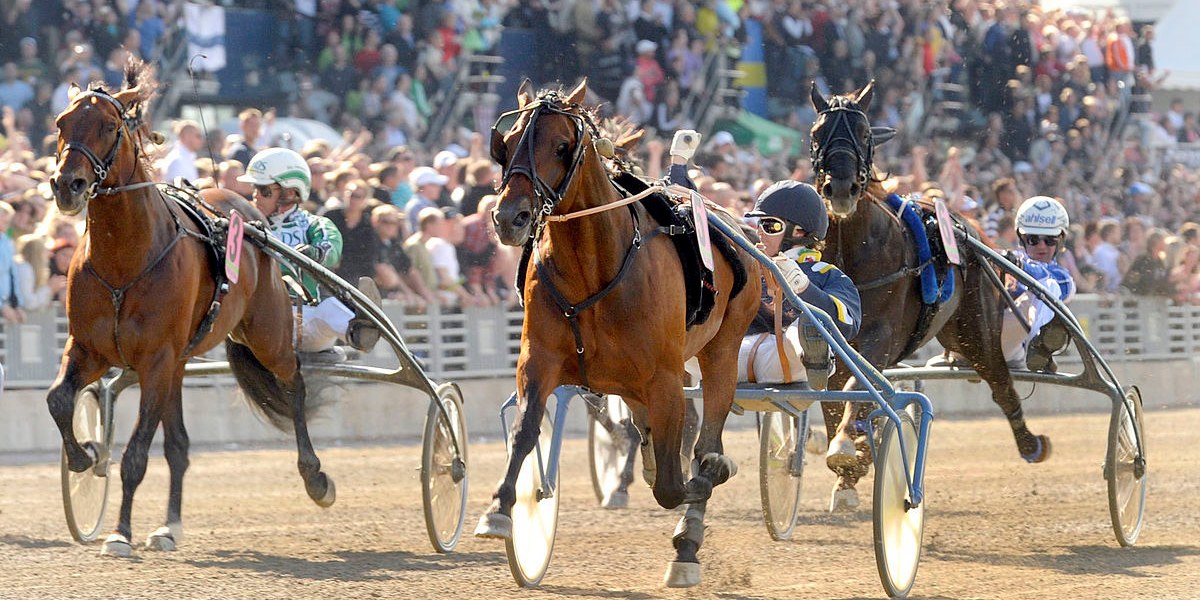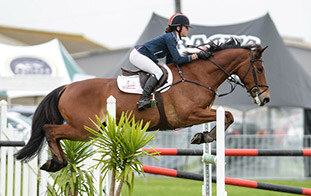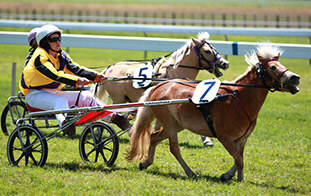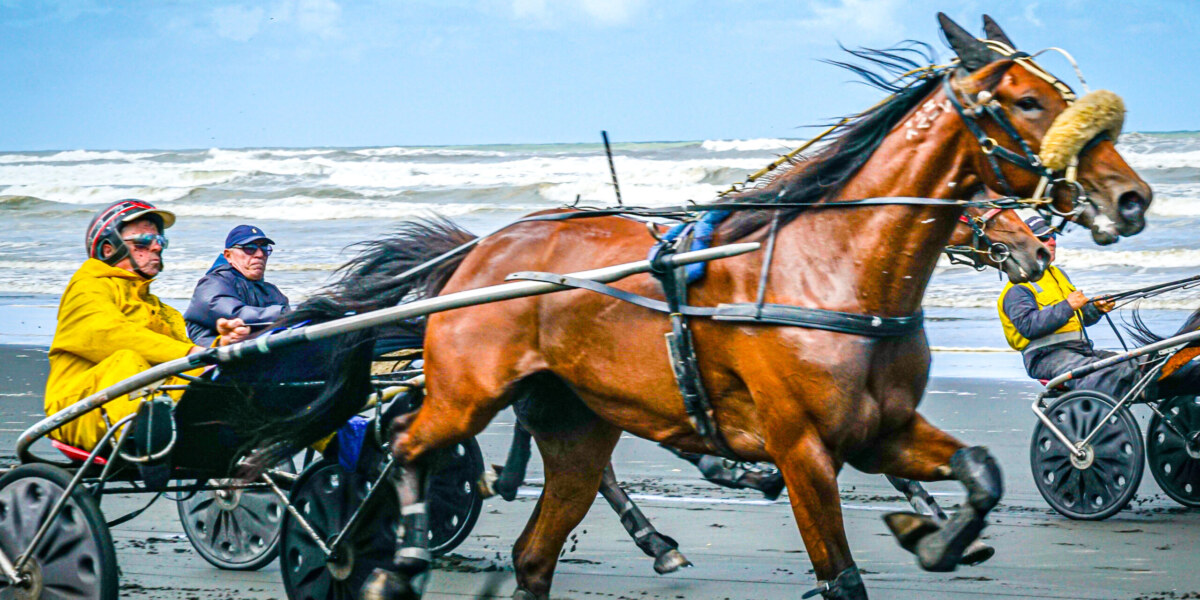LAMENESS AND POOR PERFORMANCE
It has been reported that about 90% of poor performance cases can be attributed to lameness, either clinical (obvious lameness) or sub-clinical (lameness not readily visible under normal exam conditions).
It is logical that noticeable lameness causes horses to perform below their potential, but sub-clinical lameness can be an even greater problem. Clinical lameness can be quickly recognized, investigated, and corrected. In horses with sub-clinical lameness, however, the disease process remains undetected and untreated. It is allowed to progress, resulting in irreversible damage to the structure of joints, secondary lameness, muscle pain, behaviour problems, impaired performance and economic losses.
Early diagnosis and intervention can stop minor problems from deteriorating, preserving long term soundness and maximizing performance.
Most of my clients present every horse in their stable, on a regular basis, for physical exams. This enables the identification of subtle or sub-clinical problems.
Clinical Lameness
A horse is clinically lame if it has a visible limp or asymmetric gait. It will try to lift its weight off the sore leg and place more weight on the sound legs. A “head-nod” results. (When the sore front leg hits the ground, the horse lifts its head up to shift weight to the back legs and off the sore front leg. When the sound front leg hits the ground, the head nods down, loading that leg excessively.) Sometimes, when a horse is very lame in a hind leg, the horse will nod its head down to shift weight onto the front legs and off of the hind legs. Sometimes, a horse with a sore hind leg will lift its pelvis higher on the lame side (called a hip-hike).
Lameness is only visible (clinical) when one leg is relatively more painful than the opposite leg. Both legs can be sore, but as long as the pain is unequal, the horse will protect the more sore side and the head nod will be evident. There are various degrees of clinical lameness ranging from an inconsistent or almost imperceptible limp to an inability to bear any weight at all on the affected leg.
Sub-Clinical Lameness
Sub-clinical lameness is lameness that you can not see under normal conditions. Bilateral lameness, lameness in all four legs, and lameness that only manifests under extreme stress or speed is sub-clinical.
Bilateral lameness is often inapparent. If a horse’s legs are equally sore, he will not favor one and will not limp. Instead, he will shorten his stride, develop back or muscle pain, perform below expectations, make breaks, “stop” in the last part of a race, refuse jumps, make mistakes of stride in dressage tests, tie up, blow after working, have a longer than normal recovery, or develop behaviour problems such as pulling, bucking, and rearing. Many horses just develop a poor attitude to work. “Bleeding” or Exercise Induced Pulmonary Hemorrhage and dorsal displacement of the soft palate (“flipping the palate”) are common presenting complaints.
Some lameness only shows up at high speed or under extreme stress such as in the last part of a race. Some will manifest only with a rider or doing particular movements like flying changes or lateral work. Some will appear on a lunge line or on particularly hard, soft, or irregular or unstable footing. Some only present in the cart and not in-hand. Once again, these lameness cases are often presented for performance and behavior problems, back, or other muscle pain.
Lameness In My Practice
In my practice, the majority of horses presented for lameness or performance problems have one or more of the following: 1) foot pain including sole bruises, abscesses and, corns; 2) arthritis (joint inflammation); 3) tendonitis (a bowed tendon) or; 4) suspensory desmitis. Bowed tendons and suspensory desmitis present as clinical lameness and there is obvious pain, heat, and swelling. By far, the most common sub-clinical lameness or performance problems involve joint and foot pain. In many cases these conditions are both present.
Arthritis
Arthritis is a term that means “joint inflammation” (arth-joint, itis – inflammation). Inflammation occurs in joints when they are placed under stress in excess of what they have adapted for. This stress can be sudden and severe (stepping in a hole, taking a bad step on poor footing, or some other accident), or it can be repetitive and low grade (wear and tear).
Horses are designed for eating grass and running away from the occasional predator. They are designed to land flat on their feet, load bones and joints evenly from side to side, and break over the middle of their toes. Unfortunately, not many horses have perfect conformation, perfect hoof balance, or work on perfect footing so stress is not distributed evenly. They are not born readily adapted for repeatedly pulling a sulky or carrying a rider around a track at top speed or over jumps. The idea behind training is to gradually increase the stress on a horse causing them to adapt to the work we expect them to do. In short, training a young horse or training a more mature horse down to race after a spell is constantly placing their joints under stress they have not adapted to. Therefore, inflammation occurs on an ongoing basis in most horses in training.
Joints are made up of the ends of two or more bones which are covered with cartilage and joined together by the joint capsule. The joint capsule is lined by the synovial membrane. This membrane is very important as it produces the synovial fluid (joint fluid) that lubricates, protects and nourishes the joint cartilage. In a healthy joint, synovial fluid is thick like syrup. It is replaced every 24 hours or so on an ongoing basis.
Inflammation in joints begins with synovitis and capsulitis. In synovitis and capsulitis, enzymes are produced that breakdown joint fluid, making it thin and watery. It no longer lubricates and protects the joint properly. With a lack of nourishment and lubrication, the cartilage surface of the joint becomes abraded. Over a more extended period of time, the sub-chondral bone (bone underneath the cartilage in the joint) begins to change.
Over time, then, synovitis and capsulitis will progress to sub-chondral bone disease and osteoarthritis. This entire process is referred to as arthritis or degenerative joint disease (DJD). X-rays only show bone, so relatively advanced DJD is the first stage that is reliably visible on radiographs.
It is much better to identify and treat joint problems before they are visible on radiograph. If inflammation is stopped, the synovial membrane will make new fluid that will remain thick and sticky. If the breakdown of synovial fluid is the only damage that has occurred, a completely normal joint environment will be restored. If the cartilage surface has been damaged, some treatments can provide repair, and a normal joint can be created. Once bone has changed, however, it cannot be reversed. Thick, healthy joint fluid will stop rough bones from rubbing together in the joint, and DJD will be arrested, but a truly normal joint cannot be restored.
Treatment
Since the primary goal of therapy is to stop inflammation and to stop the progression of degenerative joint disease, the treatment of choice in most cases is intra-articular cortisone. Cortisones are very effective anti-inflammatories, and remain the treatment of choice in human medicine for intra-articular therapy.
There are several different types of cortisone that can be used in joints. Controlled studies have shown that all cortisones reduce inflammation and that most improve the health of joint cartilage. Triamcinolone (Vetalog, Kenalog, or Kenacort), Isoflupredone (Predef 2X), and Betamethasone (Celestone Soluspan) have all been shown to be safe or beneficial for joint cartilage. Methyl Prednisolone (Depo-Medrol or Vetacortyl) is likely safe in low doses, but can impair the healing of joint cartilage if given too frequently or in large amounts. Triamcinolone has been anecdotally linked to laminitis, but the relationship has not been confirmed. It has never been caused in healthy horses at normal doses and has not been caused experimentally using doses up to six times those commonly used.
NSAIDS like Bute and Banamine tend to kill pain better than they reduce inflammation in joints, so they are not a sufficient treatment in most cases.
Once inflammation is resolved and DJD is arrested, the second goal of therapy is to restore a normal joint environment. Hyaluronic acid (HA) is a building block for thick joint fluid, so supplementation may be useful. HA can be administered directly into a joint, however, it does not work very well if there is a great deal of inflammation present and it is generally used in joints along with cortisone. Studies have shown that IV HA (Hyonate or Legend) is as useful as intra-articular treatments, and recent research indicates that oral administration of HA may be helpful.
If cartilage damage has already occurred, then it can be beneficial to treat horses with a product that can stimulate joint repair or provide the building blocks for cartilage repair. Adequan, Glucosamine Sulphate, and Pentosan may be used for this purpose. Glucosamine Sulphate supplementation increases the body’s production of hyaluronic acid as well.
Additional medications are available to treat arthritis including some homeopathic treatments that reduce inflammation and stimulate joint healing. The homeopathic medications I mainly use are Traumeel and Zeel.
Finally, the third goal of therapy is to prevent reoccurrence of lameness. Adequan, Glucosamine, or Pentosan can be given regularly to reduce inflammation and repair cartilage. They can keep inflammation at bay in sound horses in training, and they can increase the interval between joint injections in horses with lameness problems. Optimal shoeing and good footing are of utmost importance, and adjustments to the training regimen may be helpful in some cases.
Summary
- The products of inflammation are enzymes that damage the joint.
- Early diagnosis and treatment will preserve normal joint structure and function maximizing long term soundness and performance.
- The first goal of therapy is to stop inflammation and, therefore, to stop the progression of degenerative joint disease.
- The second goal of therapy is to restore the most normal joint environment possible.
- The third goal of therapy is to prevent reoccurrence of the problem.3
Dr Corinne Hills, Pro-Dosa International Ltd., 34 Ryan Road, RD 4, Pukekohe, New Zealand.
Phone: +64 27 238 8482 Email: info@pro-dosa.com Website: www.pro-dosa.com FB: ProDosaBoost
A horse can drink 35 – litres of water each day, but the actual amount required is determined by a number of factors including the duration and intensity of exercise; the weather, temperature, and humidity; the horse’s fitness, body condition, ability to sweat, and hari coat; and the amount and nature of the diet. Horses generally sweat to regulate body temperature, but in hot and humid conditions, sweat no longer evaporates, and it becomes an inefficient method of cooling. Heat produced by metabolism and exercising muscle exceeds the capacity for dissipation through evaporation, and it accumulates, increasing core body temperature, sometimes dangerously. Horses develop clinical signs of heat stress and even life-threatening heat stroke.
As evaporative cooling from the skin fails, core body temperature increases. In early stages, when temperature is only slighty elevated (just over 39.5ºC), horses will appear lethargic, lack impulsion, and you might have to encourage them to maintain gait or speed. Muscle cell function is impaired and damage occurs. Respiratory rate increases to below off heat, just as in a panting dog, and they may take longer than normal to recover after exercise stops. Heart rates may be elevated, and recovery to resting heart rate will be delayed. In the early stages of heat stress, horses will fail to perform at their best, and their recovery will be prolonged.
If a mild heat-stress condition is allowed to progress and body temperature climbs to critical levels, above 40ºC, gut motility stops, and signs of colic become evident. Heart rate can exceed 100 beats per minute, and arrhythmias are common. Horses can become wobbly and collapse. This is obviously an emergency situation, and immediate veterinary attention is needed. Intravenous administration of fluid and electrolytes will be required, and there is no guarantee that the outcome will be positive. Preventing heat stress, or at least identifying and addressing the condition in its very early stages, is therefore, critical.
For horses stabled in hot, humid conditions or those in transport, one of the earliest signs that they are struggling to regulate their temperature is loss of appetite. As core temperature increases, peripheral vessels are dilated to help increase heat loss through the skin. You can often see vessels standing out on the neck and chest at these times. In order to maintain this peripheral blood pressure, fluid is drawn from the lumen of the gut into the blood stream, and vessels supplying the intestinal walls are constricted. Digestion slows and horses lose their appetite. When this occurs, it is vitally important that horses drink well to replace sweat losses and to replenish fluid volumes in the blood stream and gut lumen.
HORSE WORKING, TRAVELLING, OR STABLED IN HOT, HUMID CONDITIONS DON’T ALWAYS DRINK ENOUGH.
The two main things that stimulate thirst are a drop in blood volume and a rise in sodium concentration. Horses, though, lose quite a bit of electrolytes in their sweat, so as they lose fluid, they may also lose enough sodium to keep the concentration of sodium in their blood reasonably stable. Without the increase in sodium concentration, they don’t get a clear signal to drink. In addition, horses have a number of behavioural issues that may stop them from drinking. They can be particular about the flavour or temperature of water, and in some environments, horses may just be too excited or stressed to drink.
HOW TO PREVENT DEHYDRATION AND ELECTROLYTE IMBALANCE.
When horses are travelling and exercising, digesta in the GI tract provides an important reservoir for fluid and electrolytes. A single flake of soaked hay can hold as much as 4-5L of water, and grass is already 90% moisture, so both are worthwhile parts of the pre-travel or pre-endurance race diet. Providing oral electrolytes that help maintain normal sodium levels, before and after travel or exercise, will also be important. As electrolytes added to feed may reduce feed consumption, a paste might be a more reliable delivery method.
Electrolytes added to feed and water have been shown to potentially reduce intake, and the last thing you want to do is reduce water intake when horses are dehydrated. Always offer a bucket of plain, clean water in addition to any treated water provided, to ensure picky horses will at least have something they will be willing to drink. A small amount of blackstrap molasses can be mixed in to electrolyte-treated water for flavouring. (Add it until you get a weak-tea colour.) Many horses like the sweet molasses flavour, so you can use this trick anytime you want to encourage horses to drink larger amounts or just to camouflage the taste of different waters encountered when traveling. Once they are drinking and replacing electrolyte losses, they will generally go back to eating too.
You must be careful, though, not to introduce large concentrations of sodium chloride into the gut when horses are already hot and aren’t drinking. The osmotic draw from salt draws fluid back into the lumen of the gut, reducing fluid in the vasculature and further reducing heat dissipation through the skin. Provide slightly lower but safer doses of electrolytes along with clean, fresh water to encourage drinking.
Hay and grass, along with grains, provide some potassium, calcium, phosphorus, chloride, and magnesium, but sodium levels are generally too low for all but resting horses. In studies looking at electrolyte changes in standardbred racehorses, resting, training, and racing, results demonstrated significant changes in potassium levels and lesser changes in sodium levels. A syringe of Pro-Dosa BOOST contains potassium, sodium, and chloride in ratios that reflect those findings. The levels of electrolytes included in Pro-Dosa BOOST are appropriate for most types of horses in work and travelling, including thoroughbred racehorses and sport horses involved in most pursuits. Endurance horses, on the other hand, often have more significant changes in sodium, chloride, calcium, and magnesium levels than other equine athletes, owing to the extended period of time they are racing and the large amount of sweat produced. For this reason, it is a good idea to provide sodium chloride (table salt) to endurance horses at a rate of about 30 g or 2 tablespoons per loop, in addition to a syringe of Pro-Dosa BOOST, which already contains good doses of potassium, calcium, and magnesium.
Providing your horse with optimal nutritional support for exercise, travel, and competition is critical for the maintenance of normal appetite and thirst, in turn required to sustain hydration and replace electrolytes lost through sweat.
Pro-Dosa BOOST contains significant doses of nutrients that help to support normal appetite and thirst including the following;

*Electrolytes, including calcium, magnesium, and phosphorus, as well as sodium, potassium, and chloride. These macro-minerals help to maintain normal thirst, hydration and the electrolyte balance necessary for muscle cell, cardiac, and nerve function.
*B Vitamins, which are needed in balance with each other for normal energy production, red blood cell formation, nerve cell function, and appetite;
*22 Amino Acids, that help support thirst in the dehydrated horse as well as providing the building blocks for protein synthesis, involved in muscle recovery and growth; and
*Trace Elements, including Copper, Iron, Manganese, and Zinc, important for red blood cell formation and general metabolism.
The body needs a full complement of nutrients in careful balance to achieve optimum health, performance and recovery.
Giving your horse one tube of Pro-Dosa BOOST at least two hours before loading them on the float will help them arrive at your destination in the best possible condition and ready for the competition ahead. Give an additional tube each day of competition, and for endurance horses, give a full tube between each loop, along with an additional tablespoon of ordinary table salt when it is hot and humid. Remember to sponge or hose hot horses with cool water, scraping them frequently until they have cooled, and keep them in the shade. Encourage them to drink by keeping them relaxed and providing fresh and tasty water. Feed soaked hay or grass, when possible, to provide extra water and electrolyte reserves.
Download PDF: Traveling with Horses.
While many people think a change is as good as a rest, horses, by nature, are homebodies. They like their own quiet surroundings, their own friends, and routine.
Researchers at the veterinary college at UC Davis have looked at several different classes of stress that affect horses in transport, and another group from the University of Poland have measured oxidative stress (a measure of inflammation) that results from travel. You can read their papers in their entirety for yourself, but I’m basically going to summarise some of their finding here, as I think they will be important for everyone travelling to competitions, races, and other events this summer.
Several different types and sources of stress appear to affect horses when they are travelling. They are removed from their homes, their routine, and their herd. Water tastes different, and they may be fed from different types of feeders at different times. They will be in a confined space (truck, trailer, boat, or airplane), and they won’t be able to graze, at least while they are in transit. In fact, they may or may not get to eat at all, and water may only be offered occasionally. Certainly, feed and water consumption routines will be different, at best. They might be stuck in a public transport next to a horse they don’t know or in your own float next to one that they don’t really get along with that well. They might have to have their heads tied to prevent them biting their “friends”, and restricted head movement is another contributor to stress. For some older, arthritic horses, the overall lack of free movement can be painful and emotionally stressful too. While too little movement isn’t great, the flip side of the coin is that horses will have to constantly tense muscles to brace themselves to stay balanced and not fall over while you drive along winding roads. There will be almost constant noise and vibration, and temperatures and humidity will fluctuate. It can be pretty hot and humid for hauling horses, particularly in the summer. The air coming through the truck/float may not be very fresh as it may contain vehicle exhaust, dust, or ammonia from urine in the stall. Upon arrival at your event, there may be a degree of organized (hopefully) chaos. There will likely be trucks, people, and horses everywhere. While you may think it is a very social, interesting, and terribly fun situation, your horse will find all the strangeness, strangers, and general mayhem to be less then comfortable. They may not eat, drink, or rest normally upon arrival, and they may be more likely to colic. It may take a few days of rest to recover from the trip down, but they will have to work and compete almost as soon as they arrive in many cases. Once competition starts, they will be asked to do their very best a few times a day or several times over a long week. For horses, travel to events may result in emotional stress and physical stress.
How Did Scientists Prove That Travel Is Stressful?
Physical markers of stress were measured in horses transported over a few hours, and these included the following:
- CK and AST elevations confirm muscle cell damage.
CK and AST are enzymes that are released from muscle cells when they are damaged, often by lactic acid. They are the same enzymes your veterinarian will check to confirm if your horse has tied-up. CK goes up within 2-8 hours of the episode of muscle cell damage, and it goes back down quite quickly too. AST takes longer to go up, needing about 12 hours. In tying-up, CK and AST might be over 1000 or even 2000, while normal values are around 250. In these studies, CK reached levels of about 800. Elevations in these enzymes were moderate, and proved significant muscle cell damage.
- MDA, ROS (reactive oxygen species), and fibrinogen elevations confirm cell damage from oxidation and the inflammation that results.
These are molecules that are regularly measured to demonstrate the inflammatory response to oxidative stress or the oxidative damage itself. That sounds more complicated than it is.
Oxidative stress is the same thing as oxidative muscle cell damage. It occurs when exercising muscle cells produce little molecules called free radicals (ROS). Those little molecules cause inflammation and damage to the muscles that produced them, and that process is called oxidation, oxidative stress, or oxidative muscle cell damage. The Polish team found that MDA and fibrinogen were significantly elevated, and these are indicators of inflammation and oxidative stress.
- Body temperature and White Blood Cell (WBC) changes demonstrate immune compromise.
Elevated body temperatures and low white blood cell counts were common features, and both of these are related to the suppression of the immune system at times of stress.
- Dehydration and body weight losses confirm reduced feed consumption and either reduced water consumption or increased fluid losses.
Dehydration, as you might expect, was a feature, especially where horses were transported in warmer weather. It was thought to be related to the disruption in normal feed and water consumption patterns along with their response to heat. On average, the UC Davis group reported that horses lost 6% of their body weight due to reduced feed and water consumption in addition to dehydration.
- Variations in heart rate and cortisol increases indicate hormonal and biological responses to emotional stress.
Cortisol, a hormone directly elevated at times of stress was found to be significantly increased as was the incidence of heart rate variability. These findings might tell you that your horse will actually feel stressed.
What Does All That Mean for You and Your Horse?
As I said, researchers proved that muscle cells are damaged, inflammation develops, horses get dehydrated, and lose weight. It can mean more than that, though, as these changes make horses more susceptible to disease conditions. It is well known, and studies have confirmed, (several studies are referenced in the Polish group’s paper that you can look up and read if you wish) that these changes can lead to tying-up, pneumonia, and colic, to name only a few. If you are in any doubt that these conditions may be developing, call a veterinarian immediately.
Wow! This great trip for you may not be so great for your 4-legged friends. What can you do to make it better for them?
The bunch at UC Davis had several suggestions. In addition to the practical and obvious things like making sure your truck is in good repair and clean, making sure your horses are well hydrated before they travel and have eaten well, making sure they eat and drink well while away, planning your route and limiting the time spent travelling each day, they came up with a few that were a bit more interesting. Horses that were allowed to face backward when travelling appeared to have lower markers for stress and were less likely to suffer illness, as air quality and their ability to clear their airways was improved. As always, there are exceptions. A small group had greatly increased stress when facing backward and really wanted to travel facing the front. In all cases, the maximum possible head freedom was good (so don’t tie your horses short unless you must), and most of all, horses should be given 3 full days of rest to allow for complete recovery from the ordeal.
Three days of rest is probably not very realistic for most people. Your classes, races, or competitions may start the day you arrive or the day after. Preventing as much of the physical results of stress as possible will be important if there isn’t time to allow for full recovery from travel, so if you can’t practically follow these recommendations, read our “Letter to Equestrian Sport Competitors” found on the “where to buy” in New Zealand tab on our website for some tips on how to use nutrition to help your horse cope with the stresses of– and recover from travel.
THINK ALL “BOOST” PASTES ARE THE SAME? THINK AGAIN!
Download the PDF Article Here Think Again
The composition and balance of nutrients included as well as the safety and quality of each product is different, so buyer beware!
Recently, we have noticed a number of copy-cat “boost” products appearing in the marketplace. Some have chosen the same colours and package appearance or promotional text, and all have chosen a similar name and appear to have copied part of our formulation (the less expensive parts, anyway). None of these products have included the complete formulation contained in a Pro-Dosa BOOST, but they think you will be fooled by an only partially complete product that looks and sounds similar and sells at a lower price. I think, horsemen should think about why someone would do that.
It is said that the sincerest form of flattery is imitation. It does appear that some of our new competitors have recognised Pro-Dosa BOOST is of exceptional quality and composition, and they can’t compete with that. Instead, they hope to be mistaken for the same thing at a lower price. Since I didn’t make Pro-Dosa BOOST to be a cheap product with a large profit margin, I know they can’t make a similar quality product, any less expensive. They have to make a less-complete, poorer-quality supplement instead. While I suppose I should be flattered, instead, I am concerned about how many horsemen will think they are feeding my product, when they’ve bought a “copy-cat” by mistake. How many horses will be fed supplements that aren’t complete, balanced, or safe enough? How many people, feeding a copy-cat they think is ours, will think our product isn’t as good as it used to be when they don’t get the observable effects they have been accustomed to when feeding the original, tried and tested, Pro-Dosa BOOST, established in 2001?
WHAT DO YOU NEED TO REMEMBER ABOUT PRO-DOSA BOOST?
In order to achieve optimal metabolism, performance, recovery, and health, it is necessary to provide a broad spectrum of nutrients, in bioavailable forms, in ideal balance with each other and with the cofactors necessary for their absorption and function. The doses provided must reflect the requirements of horses under stress due to travel, hard work, racing, competition, and illness, as the administration of only some of the nutrients required or feeding quantities below or above requirements may result in imbalances that actually impair absorption and function. With this in mind, I developed Pro-Dosa BOOST to provide complete, balanced, and bioavailable nutritional support.
Because I made Pro-Dosa BOOST for the stables I had worked for in my veterinary practice, for years, I didn’t make it with profit margins or easy marketing in mind. I made it to make a difference to my patients and to make things easier and less expensive for my clients, who were my friends and not just face-less consumers, I didn’t know. I looked up the nutrient requirements published by NRC, and then I looked up other nutrition research and texts to fill in requirements not available through NRC. I compared those to what I had been providing for my patients in injectable form, and I referred to veterinary pharmacology texts and talked to exercise physiologists. I came up with a profile and doses of nutrients that, I believed, would be the most scientific and practical for competitive horses in my veterinary practice. I didn’t worry about whether or not horsemen would immediately understand the formulation or recognise the importance of some of the less familiar sounding nutrients. I focused on making a difference to equine health and welfare.
As a veterinarian, my clients trust me to provide safe, secure, efficacious, and ethical treatments for my patients. Product quality, therefore, had to be of paramount importance. I decided to make Pro-Dosa BOOST out of human food or pharmaceutical grade nutrients that would meet much higher purity standards than animal feed grade nutrients.
I thought it was important to measure the concentration of nutrients in the final product, because I wanted to be confident that I would be providing my patients the correct doses of each nutrient, not more or less, for best effect, and for their health and safety. If insufficient doses are given, then no impact or a negative impact on the overall health of horses may result. If you are buying a supplement that doesn’t contain what the label says, then at best, it’s a waste of money. At worst, it could be detrimental to your horses’ health. At the same time, giving too much of some nutrients is dangerous. Many horsemen will recall the tragic story from a few years ago about the group of polo ponies who died as a result of eating a feed supplement that contained ten times the amount of selenium that it was meant to, when an error was made in production of the product. I wanted to make sure that would never happen to a horse fed Pro-Dosa BOOST.
Finally, I wanted to be certain that I would not inadvertently cause harm though contaminants. I made my production and product tracking procedures as safe as possible by registering my facility in the NZ government inspected and certified GMP program. I used hazard analysis principles (HACCP) in developing methods of raw materials procurement, manufacturing, and finished product quality and safety assurance. I decided to submit all finished product for analysis for naturally occurring prohibited substances that may contaminate feed grade nutritional products and cause positive drug tests, and I submit all finished product for microbial culture to ensure it is sterile. Finally, I validated (proved) that my processes were consistently effective in producing a quality, sterile, and safe product that horsemen could feel confident and secure feeding to their horses. I wanted them to know that they could trust Pro-Dosa BOOST to be providing exactly what they were paying for and what their horses actually need to perform and recover at their best.
Think about what you are spending your money on and learn to read labels critically. Read my series of blog articles on “Reading Labels”, and please do contact me if you’d like help with general nutrition or comparing supplements and feeds.
Could Pro-Dosa BOOST produce a positive test? This question was asked of us frequently by trainers and horse owners, a few years ago. At the time, Pro-Dosa BOOST only had 1 mg of cobalt per tube, so the short answer was, “no, it wouldn’t produce a positive test”. We were asked the question many times though, and we felt there were likely many, many more horsemen who had the same concerns but who did not contact us to ask. We decided we had better take action to try to get some information out there for the wider horse community to see.
Cobalt has become a very significant issue in racing and other sports over the past few years. Following positive tests in Australia, racing authorities have made cautionary statements about the administration of cobalt to horses, and it has been reasonably well publicised that administering it at levels that result in the excretion of more than 100-200 micrograms of cobalt per litre of urine (depending on the racing jurisdiction) will result in a positive test. What hasn’t been explained is how much cobalt you can safely feed before those levels are reached. Racing jurisdictions have been working towards finding that threshold but have not yet released any information.
On a more basic level, horsemen and veterinarians have been provided with very limited information about the impact of “normal” levels of cobalt in the feed on the cobalt levels in urine. “Normal” levels may be significantly less than the threshold doses that will eventually be established. Instead, regulatory authorities have said that cobalt deficiencies are not common in horses, and they have recommended that it should be eliminated, as much as possible, from the equine diet until data is published indicating the maximum amount that can be fed.
What is cobalt and how much do horses require? Cobalt is a trace element needed by horses in very small amounts to facilitate normal physiology and metabolism. It is naturally present in feed stuffs, but as levels may be quite low, it is generally included in the formulation of prepared feeds and supplements.
The National Research Council (NRC) pre-2011, recommended daily dietary requirement is at least 0.1mg of cobalt per kilogram of dry matter intake per day. Your average 500kg racehorse can be expected to eat 2% of their body weight per day, which would be 10kg of feed on a dry matter basis. 10kg dry matter intake X 0.1mg cobalt required per kg dry matter = 1mg of cobalt required per day for normal health. According to NRC, resting horses require about half of that. NRC 2011 standards list reduced minimum requirements, ranging from 0.5mg to 0.6mg, depending on age and level of work.
In virtually all cases, feed companies use NRC guidelines when developing formulations, so most complete feeds will contain at least 1mg of cobalt per day, when fed as directed. A horse’s cobalt needs, therefore, should be readily met by its basic feed intake, as long as the cofactors needed for absorption and function are present in the diet. As horses in training for competition and racing are generally fed a well-balanced diet, most will be receiving the cobalt needed for normal health.
After completing a cobalt clearance study in Standardbred horses in training, in New Zealand, we concluded that we could remove cobalt from our formulation while feeling confident that Pro-Dosa BOOST would still provide complete and balanced nutritional support for optimal performance, recovery, and health. We wanted to ensure that trainers and horse owners, from all disciplines, could incorporate Pro-Dosa BOOST in their training regime, without any concern about producing a positive test for cobalt.
If you would like to read more about our findings, please follow the link to our cobalt clearance study.
With the rules of racing or competition quite variable from place to place and changing all the time, it is very important to consider the specific regulations that apply to you, in your sport, and in your part of the world before feeding Pro-Dosa BOOST according to label directions. If you are not allowed to “administer” anything on the day of racing or competition, consider the other ways and times you might be able to incorporate Pro-Dosa BOOST in your management system to ensure your horses are at their best when training, competing, and travelling.
- Feed Pro-Dosa BOOST rather than applying it to your horse’s tongue.
Pro-Dosa BOOST is comprised of a broad range of highly purified nutrients, in good balance with each other, and in quantities that reflect the increased requirements horses have when they are under the stress of hard work, illness, or travel. It is designed to support normal metabolism, health, performance, and recovery. The composition, therefore, is not a problem for horses racing or competing in equestrian sports.
The route of administration can be an issue in some racing jurisdictions. In many countries, Pro-Dosa BOOST can be applied on the tongue, directly from the tube. In some, NOTHING can be administered on the day of racing; not even water. In those places, horses can often be provided with Pro-Dosa BOOST mixed in their feed. It is in a molasses gel, so most horses will eat it happily enough when offered in that manner. In others, it can be fed on the feed on race day, but only if it is normally fed between races as well. Please check your administration rules before deciding how to incorporate Pro-Dosa BOOST into your management system.
If you can’t even feed it on race day, Pro-Dosa BOOST can still be useful in managing your horses.
- Use Pro-Dosa BOOST to support recovery from work prior to racing.
Give a half or a full tube of Pro-Dosa BOOST immediately after the last fast-work prior to racing. You can adjust the quantity depending on how hard the horse has worked, the needs of the individual horse, the climate, and how far they will travel, or how challenging race day will be.
Good horses and problem horses will usually benefit from a full tube. Horses that do well, no matter what you do with them, will mostly be fine with a half. If you aren’t allowed to feed Pro-Dosa BOOST on race day, give the full tube post workout.
This portion will help to ensure that horses will recover more completely from their last fast-work before racing. Studies have shown that it can take up to four days for muscles to recover from hard work, and many horses will have their last fast-work session only a couple of days before racing.
Muscle cells take up amino acids much more efficiently for about an hour after hard work. If you can get a broad range of amino acids, in appropriate ratios for protein synthesis, into them during this narrow window of opportunity, you can make a difference to muscle cell recovery. Think of it like the protein shake a body builder would have after they finish a workout at the gym.
Of course, Pro-Dosa BOOST isn’t just amino acids. It also contains electrolytes, vitamins, and trace-minerals. Pro-Dosa BOOST contains the nutrients necessary to support normal appetite, nerve cell function, red blood cell production, muscle cell recovery, and electrolyte balance.
- Use Pro-Dosa BOOST to help horses in hard work to maintain normal appetite, body condition, and performance over a long season.
Give a half or full tube of Pro-Dosa BOOST immediately after each fast-work. Most trainers use Pro-Dosa BOOST this way in their horses. They believe they get more starts per preparation and more consistent performance throughout the season. For horses that struggle to maintain body condition during a long season, using Pro-Dosa BOOST this way can help to keep them eating normally, support muscle cell recovery, and help them to maintain muscle mass.
- Use Pro-Dosa BOOST to help horses recover from a race.
Give a half or full tube of Pro-Dosa BOOST immediately after returning home from a race.
While you may be outside the window for making the biggest difference to muscle cell recovery, you can still make a difference to how well your horse will eat, drink, replenish reserves, and recover.
Horses that have a hard run may not eat up well, and if they don’t eat, they won’t back up well. Pro-Dosa BOOST will support normal appetite and encourage them to clean up their feed when they get back home or to their stable. If you are allowed to feed them a syringe of BOOST prior to racing, they won’t need this dose afterwards. If you can’t feed them Pro-Dosa BOOST before racing, be sure to give this post-race dose when you get home.
- Use Pro-Dosa BOOST for travel.
Give a full syringe of Pro-Dosa BOOST prior to travel, and for longer journeys, give a syringe upon arrival.
We recommend Pro-Dosa BOOST for travel, especially when travelling over a long distance or over multiple days. Always have fresh water available and make regular water stops along the way. (Please consider any rules of competition that may apply before feeding Pro-Dosa BOOST as directed).
Providing your horse with one tube of Pro-Dosa BOOST, at least 2 – 4 hours prior to loading them on the float (or if you are leaving early in the morning, it can be given the night before, instead), will help them arrive at your destination in the best possible condition. If travel exceeds 8 hours, give another portion upon arrival, as long as that doesn’t contravene your rules of competition.
Using Pro-Dosa BOOST before travel will not only help protect muscles from oxidative muscle cell damage during travel, but it will also help support normal appetite. This can be especially important when horses are to be stabled away from home, in a new environment. This is ideal for horses traveling further afield and when racing in big campaigns.
- Use Pro-Dosa BOOST the day before racing.
From our cobalt clearance study, we found that Pro-Dosa BOOST had an impact on horses for around 18 hours; much longer than the 8-12 hours we had originally expected. If you are able to give a dose of Pro-Dosa BOOST the night before racing, you could reasonably expect the same results as you see when feeding it on race day. Please check the rules of competition that apply to you.
- Use Pro-Dosa BOOST as a health tonic.
Provide half a tube every other day to horses that may require more nutritional support when under the stress of illness.
Pro-Dosa BOOST has been widely regarded by the equine industry as a top-quality, nutritional aid for horses, given prior to competition, racing, or transport, after hard work for recovery, and at times of stress to support normal appetite, thirst, and health. What many industry participants are not aware of, however, is that Pro-Dosa BOOST can also be used effectively by stud managers and yearling preparers as a tool to help achieve top prices for yearlings as they go through the sale ring.
Yearlings, under stress during preparation, parades, transport, and at the sales venue, have significantly increased requirements for a number of nutrients including B-vitamins. Pro-Dosa BOOST contains all of the B vitamins in doses that are correctly balanced with each other as well as with all other nutrients. They are important for coat and skin condition, red blood cell and energy production (so tired or lethargic horses will get a lift), nerve cell function (so nervous horses will be better able to relax and focus), and most importantly, especially when yearlings have travelled to the sales and are being stabled in a new and stressful environment, they support normal appetite.
In the last two to three weeks leading up to the sales, it can be helpful to give half a tube of Pro-Dosa BOOST every other day, either mixed in with the feed or applied on the tongue. You will notice gleaming coats and the horses will eat and drink well.
While at the sales, try giving nervous horses one full tube of Pro-Dosa BOOST each day. It contains as much magnesium and thiamine as many calming products available on the market, and these nutrients actually work better when given in combination with each other and with the amino acids tryptophan and tyrosine than if administered separately.
For those that are not eating well or who are tired, give a full tube each day they are at the sales complex to support normal appetite and give them a lift.
Pro-Dosa BOOST contains 22 unassembled amino acids in good balance with each other. Unassembled amino acids stimulate thirst more effectively than electrolytes in dehydrated horses, and they provide the building blocks for protein and muscle cell growth.
Pro-Dosa BOOST contains a sizable dose of Vitamin C which supports normal immune function and scavenges free-radicals, thereby protecting muscle cells from oxidative damage that occurs in transport. They will arrive at the sales in the best possible condition if they are given a full tube a couple of hours before loading them to travel to the sales complex.
Always ensure horses have access to plenty of clean fresh water so they can keep hydrated throughout their preparation and sales.
We often get asked why we only provide Pro-Dosa BOOST in syringes and not in a bulk form?
Pro-Dosa BOOST is provided in an 80 ml syringe for a number or reasons including the following:
- It is easily administered, with no wastage;
- The precise quantity of recommended daily nutrients are assured in every dose, where as bulk formats may settle, providing more at the bottom and less at the top;
- It is safe and secure because a capped syringe prevents contamination;
- It is stable as a syringe allows no ‘free air-space’, limiting oxidation (degradation) of nutrients; and
- It is compact and convenient, allowing for easy storage (especially when travelling).
Supplements are available in other various forms like liquids in bottles, powders in buckets or bags, and pastes in bulk to be administered via a drench gun. When using supplements like these, you must be careful that you don’t deliver less or more than your horse may require.
- Nutrients (minerals, vitamins and amino acids) provided in powder, liquid and paste form will generally start to settle in layers, with heavier nutrients slowly moving to the bottom. This process is known as sedimentation. It is caused or facilitated by movement and occurs over time. When product sedimentation occurs, it is nearly impossible to know how much of each nutrient is actually contained in a scoop or dose. You can’t guarantee that each of the nutrients are administered in the correct quantity, and even if they are provided in the bucket in correct ratios, imbalances may result.
- Powders placed in feed often create palatability issues and can cause feed refusal. Horses may try to eat around the powder, if not fully mixed, or refuse to eat any of the feed provided. The result is wasted feed, supplement, and money.
- When product is used from a bucket or bottle, more ‘free space’ is left and filled with air. Where air contacts the surface of product, oxidation can occur. This is a form of degradation which can affect the quality of the nutrients.
- Powders can absorb moisture from the air, causing molding, clumping, and hardening, making them more difficult to use or rendering them entirely unusable.
- Contamination can occur when a lid is left off a bucket or bottle. All manner of contaminants could fall in, quite unnoticed. Bacteria, molds, and even other products or pharmaceuticals, accidentally introduced, when fed to your horse could potentially lead to illness, product viability issues, or positive drug tests.
- Using a syringe or drench gun from a bulk container can facilitate the spread of illnesses and viruses throughout a stable. ‘Double dipping’ the syringe from horse to horse or back to the container of liquid or paste is it not the most hygienic practice. While most manufacturers would recommended the thorough cleaning and disinfection of drench guns between horses, in a stable setting, this is rarely done.
It is important to remember that the body needs a full complement of nutrients in careful balance to achieve optimum health, performance and recovery. We feel that providing Pro-Dosa BOOST via a syringe is the easiest, most reliable, safest, most hygienic, and most cost-effective way to provide your horse with complete and correctly balanced nutritional support. You can be assured that Pro-Dosa International Ltd have and always will continue to produce a secure product with unsurpassed quality.
If you would like more information on what to look for when reading a supplement label make sure you read our blog articles from the Reading Labels series.
From an environmentally friendly perspective, we would love to provide Pro-Dosa BOOST in a bulk format, but we just can’t compromise the quality, safety, and security of our product. We have, therefore, sourced packaging that can be recycled or reused. The shrink-wrapping that seals each box is fully recyclable. The boxes can be flattened and recycled. The syringes and caps can be re-used for other things in your stable, but please ensure you wash them before using them at a later date. Our current syringes are recyclable, even though the recycling symbol isn’t stamped on them anywhere. Our new syringes, that will be available from January 2019, will be stamped with the recycling symbol and plastic grade. They can be cleaned out and dropped in your recycling bin if you aren’t going to use them again. The labels are plastic and can also be recycled.
Pro-Dosa BOOST is formulated to replace essential nutrients lost in training, competition, transport or stress, so many people use it to ensure their horses have the energy needed for competition, but did you know that Pro-Dosa BOOST contains nutrients that help manage your horse’s nervousness or excitability too?
There are several nutrients recognised to be important in the maintenance of normal nerve and muscle function when horses are under stress. Magnesium, Tryptophan, Tyrosine, and Thiamine (Vitamin B1) have all been used for nervous horses, and these nutrients can have a greater impact when used in optimal balance together than when fed separately.
Magnesium is the most commonly known nutrient for calming. It is an essential mineral involved in nerve transmission, cardiac rhythm, muscle function, and relaxation. Low magnesium can lead to nervousness, loss of appetite, and poor body condition in horses. This can be a vicious circle as nervous horses tend to use extra energy and sweat profusely, further depleting their magnesium stores.
Tryptophan is an essential amino acid required for the production of serotonin in the brain, and as serotonin functions to maintain mood balance, tryptophan has been associated with reducing distress and aggression. Essential amino acids are not produced in the body, so they must be provided in adequate quantities in the feed. Some standard hay and grain diets are deficient in tryptophan.
Tyrosine is another amino acid that is an essential component for the production of several brain chemicals called neurotransmitters. These help nerve cells communicate and influence mood.
Thiamine has a direct role in nerve impulse transmission, and scientific research has shown it to relax horses. It is also important in energy metabolism and helps to control hyperactivity. Thiamine works cooperatively with magnesium and other B vitamins and should be given with calcium, which potentiates effect. Thiamine is produced in the hindgut by microbes, providing the horse with sufficient amounts on a daily basis. Horses that are under stress or have impaired digestive functions, however, may not produce enough to meet requirements. They may benefit from supplementation.
Pro-Dosa BOOST contains all four of these vital nutrients in optimal balance with each other and with all of the other nutrients required for their absorption and function. It is important to remember that the body needs a full complement of nutrients in careful balance to achieve optimum health, performance, and recovery. Administration of individual nutrients may result in imbalances that actually impair availability and usefulness. By providing all of the nutrients required in greater doses when horses are under stress, energy levels and attitude can both be supported, while normal appetite, thirst, and metabolism are also maintained.
For the past decade, Pro-Dosa BOOST has been used in 35 countries, in endurance, show jumping, eventing, hunt, and dressage horses, whether travelling and competing at a novice or international level, for performance, recovery and health.
Peak performance depends on the supply of energy to drive and fuel the working muscles. Providing almost three times as much energy as oats on a weight basis, oil offers many advantages in terms of energy efficiency. For both digestive and metabolic efficiency, oil is superior to grains and protein. In fact, the efficiency of ATP synthesis (i.e. the currency of energy), is around 39% for oil and 20% for carbohydrates.
In addition, calmness, as measured by spontaneous activity and reactivity (spook tests), is lower when diets are fortified with oil. Oil-enriched diets reduce the amount of metabolic heat generation, both at rest and during exercise and for the racing standardbred, this reduction in heat load can provide a competitive edge. The lower heat load lessens the need for sweating, reducing fluid loss during exercise. Studies have traditionally shown that oil-enriched diets affect working muscles by increasing oxygen uptake, increasing fatty acid utilization, sparing muscle glycogen during low intensity exercise and increasing glucose availability during intense sprinting exercise. Fat supplementation also reduces heat production, improves hydration and perhaps most importantly, improves the power : weight ratio.
Overdoing oil can result in decreased glycogen stores in the muscle, meaning the horse could “hit the wall” sooner, or have nothing left at the end. However, this does not happen until oil comprises more than 8-10% of the total diet – including hay, chaff and concentrate. So, for a 450kg horse eating 10kg of feed, oil intake would have to exceed 800-1000ml a day before there was any interference with muscle glycogen.
However, not all oils are created or utilized equally. Cold pressed oils are far healthier than solvent-extracted oils. Cold-pressed canola contains vitamin E, Coenzyme Q10, lipoic acid, omega-3 essential fatty acids and other very potent natural antioxidants. Without the addition of EPA and DHA, up to 10 times more oil is required to achieve the same levels of omega 3 activity, so for both ourselves and for hard-working horses, it is important to check that EPA and DHA are present in the oil. The maximum benefits from oil occur after two to three months, so it is best to introduce oil-enriched feeds and Omega 3 supplementation early in the program. This will allow sufficient time for metabolic adaptation to occur and ensure that the benefits of fat supplementation are realized when they are needed most.
The ratio of muscle to body fat affects the power to weight ratio – so when we want topline in a racing standardbred, we must use the combination of work and diet that will promote muscle building and not fat deposition. Just as occurs in humans, the finer details of the diet affect body composition. In addition to the type and intensity of exercise, the amount of muscle development is determined by the amino acid composition of the feed protein. Soybean meal, lupins and lucerne are well known as good sources of protein and this is because they are high in lysine.
Lysine and methionine are just two of the essential amino acids that make up protein. Just as branched chain amino acids have been found to be important in horses, on-going equine nutrition research has shown that other amino acids, including threonine are important for muscle building. Regardless of the percentage of protein in the feed, if there is not enough of each amino acid a limit will be put on muscle development and the horse will lay down cover (fat) instead of muscle.
But even if the feed contains good levels of lysine and other essential amino acids, for several reasons, they may not be available to the horse. Some feed processing techniques, such as dry-extrusion, rely on high temperatures and shearing forces which can damage lysine and other amino acids. Steam-extrusion includes moisture in the cooking process and losses are negligible and digestibility increases to over 90%.
As well as a sound daily nutrition program, strategic timing of meals pre- and post work can impact profoundly on the development of muscle power. Muscles consume vast amounts of anti-oxidants and essential amino acids during work and at the microscopic level, small strains, rips and tears occur. Correct composition and timing of feeding can take advantage of the window of opportunity created by the raised hormone levels and increased blood supply that accompany exercise. To be effective and hasten muscle recovery, the concentrate must provide anti-oxidants, amino acids and be consumed no more than two hours before or one hour after work.
The effectiveness of the diet is measured in terms of metabolic efficiency, i.e. the maximum output with the minimum production of undesirable products such as manure, acid and heat. To increase power for work, diets need to be designed to influence muscle fuel levels. But the feed chosen also influences the power : weight ratio (ratio of muscle to fat), thermoregulation (heat production and hydration) and mental attitude – all of which impact on performance and fatigue.

